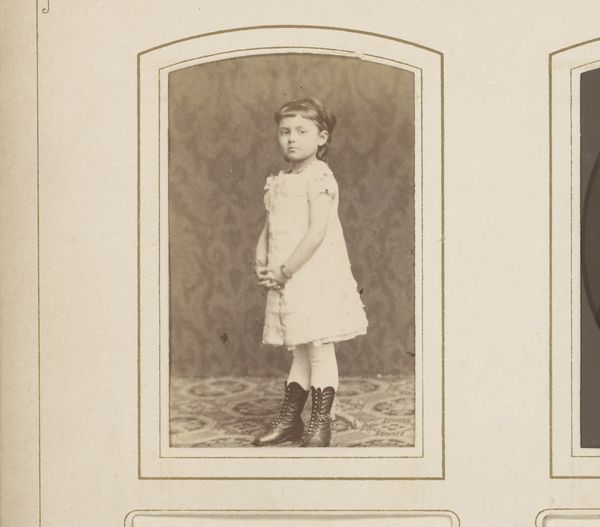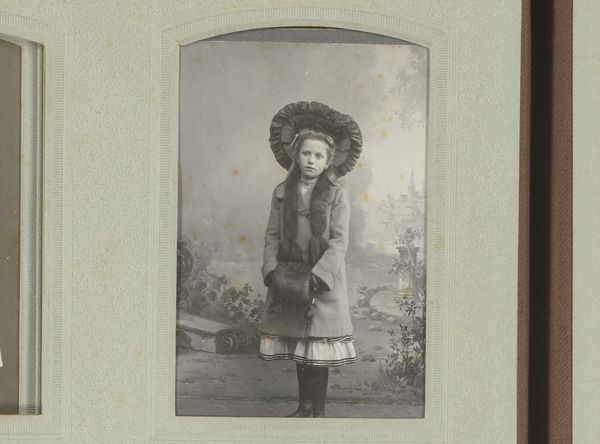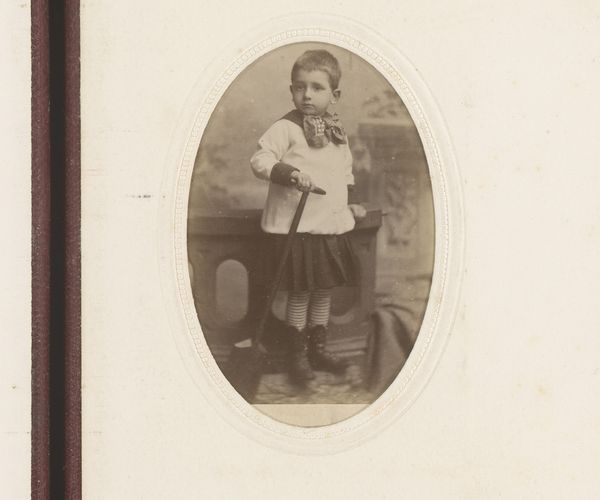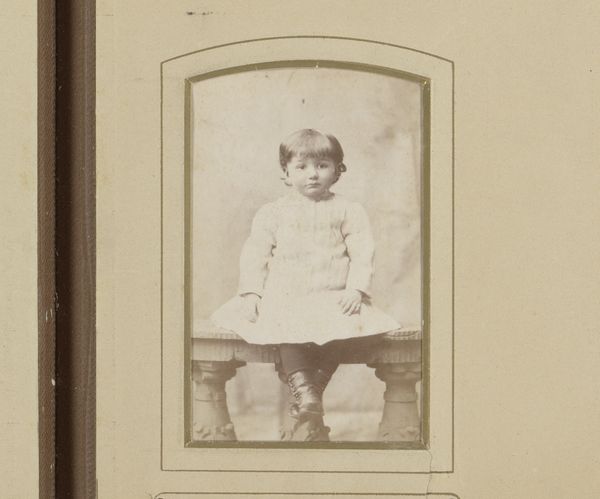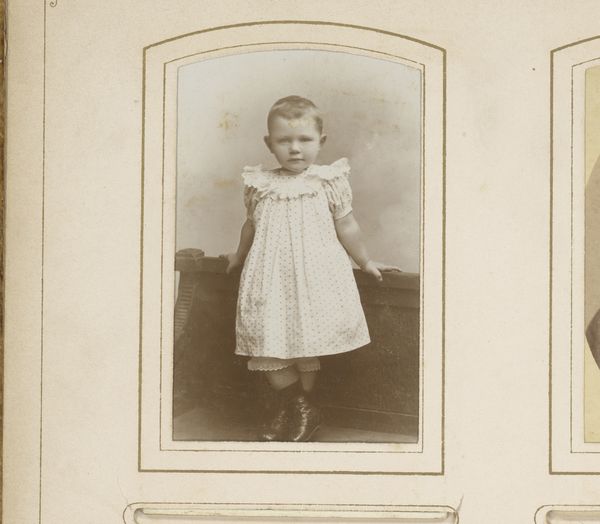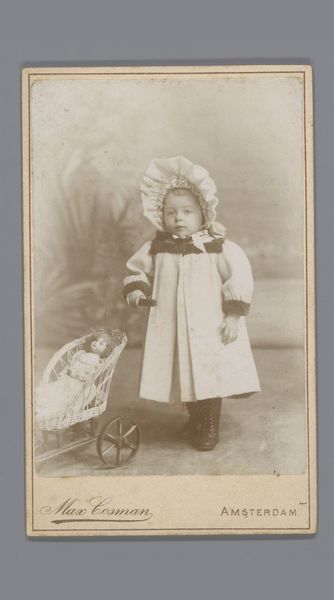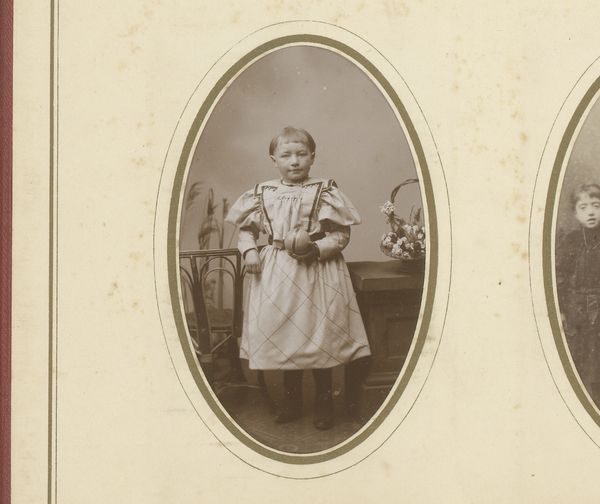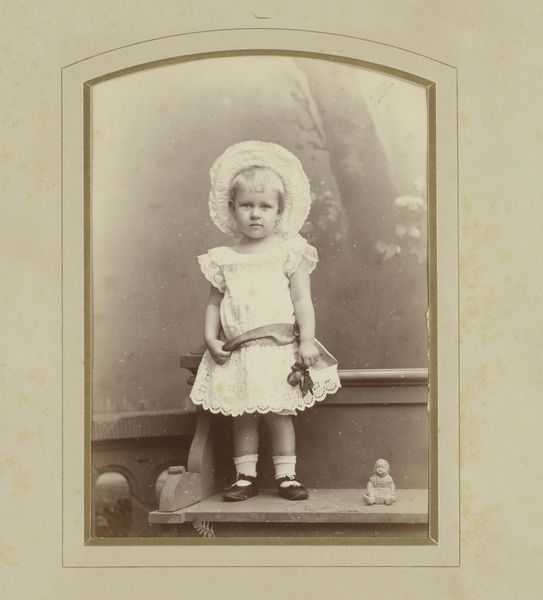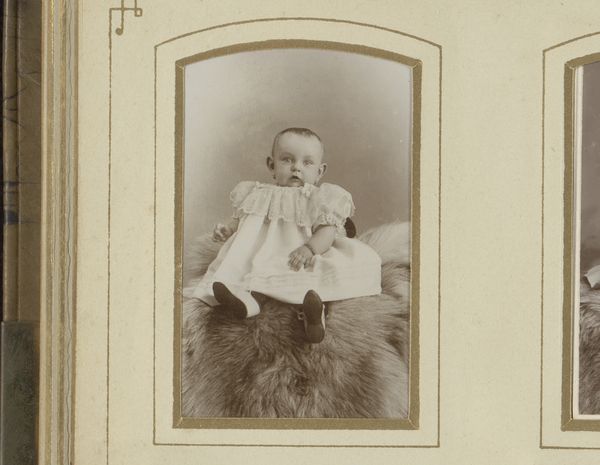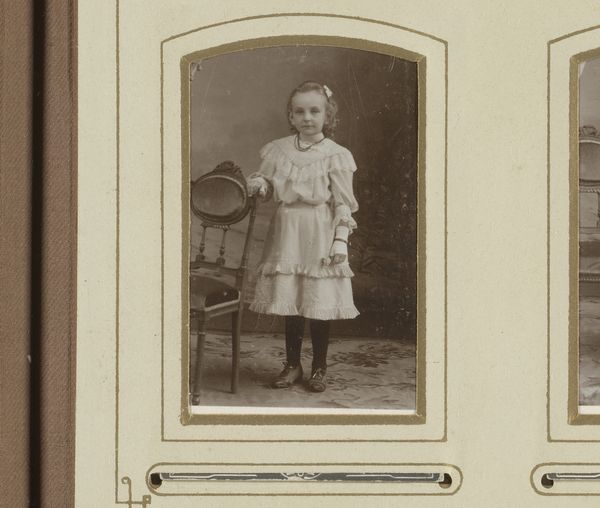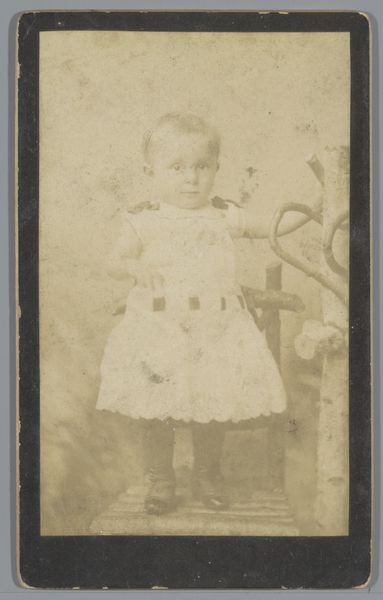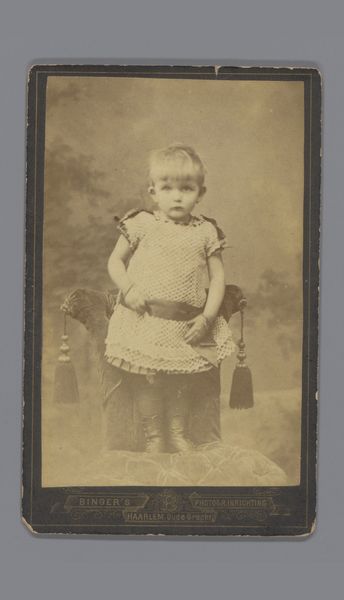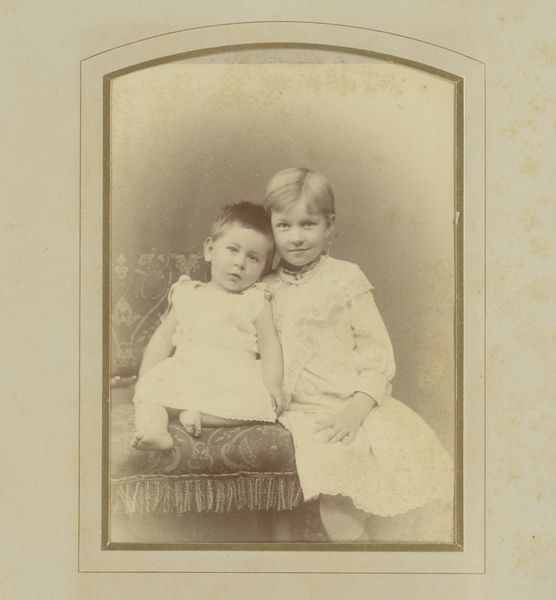
photography
#
beige
#
portrait
#
aged paper
#
toned paper
#
earth tone
#
muted colour palette
#
photo restoration
#
pictorialism
#
light earthy tone
#
photography
#
historical photography
#
brown and beige
#
neutral brown palette
#
genre-painting
Dimensions: height 82 mm, width 51 mm
Copyright: Rijks Museum: Open Domain
Curator: This is a work by Machiel Hendricus Laddé, titled "Portret van een staand meisje met pop," or "Portrait of a Standing Girl with Doll." It's a photograph dating from somewhere between 1892 and 1906. What are your initial thoughts? Editor: It strikes me as immediately poignant, and there's a certain vulnerability in the muted palette. The light earthy tones create such a melancholic mood. What can you tell me about the process used to produce it? Curator: Well, this piece falls squarely into the pictorialism movement. Laddé and other pictorialists manipulated photographic processes, treating photography less as a means of documenting reality and more as a vehicle for artistic expression. He also explored genre paintings in his career. We can trace a shift to viewing the photograph less as an item that "records" and more as a thing crafted. Editor: Absolutely. This historical photograph has that certain aged quality, visible through the toned paper—almost as if the passage of time is palpable. It forces us to ask what type of labor goes into the making and the subsequent restoring of the piece to its current state. What do we make of a “historical” photograph like this? Curator: I find myself pondering the gaze of the little girl. There’s an ambivalence in it. We see a figure positioned between childhood innocence, seen in her connection to the doll, and an imposed maturity of pose, the way she stands. The clothing is a product, of course, of its era and hints at class. The composition allows us to reflect upon these constraints. Editor: It's a carefully composed image, down to the placement of the doll in the child’s arms, a testament to photography's conscious creation. Thinking about materiality, what strikes me is that this object has persisted, becoming not just an image of a girl but a material witness. It exists now to challenge the distinctions that exist in terms of what we understand as ‘high art’ photography. Curator: Agreed. By looking through our contemporary lens we find ways to unlock historical works such as these. Editor: Definitely. It offers such a compelling intersection between a captured moment, material history, and a wider frame.
Comments
No comments
Be the first to comment and join the conversation on the ultimate creative platform.
